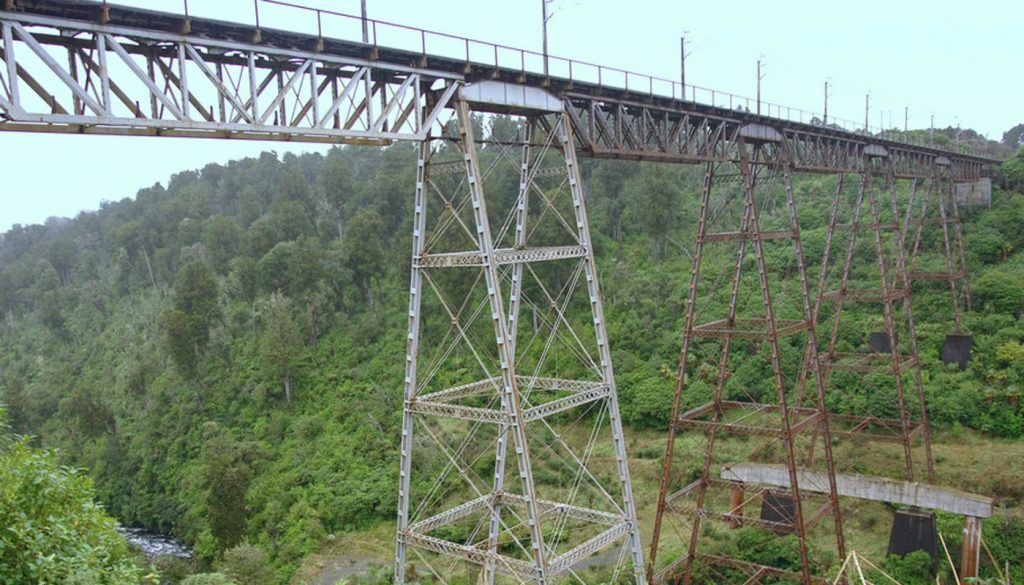Rather than tear down a historically significant landmark, engineers got creative to make an old bridge fit for modern use.
The modernisation of a 110-year-old rail viaduct on the North Island of New Zealand has earned an international gong for excellence in structural heritage engineering.
A revamp of the Makatote rail viaduct to meet the future load requirements of KiwiRail has won the 2017 Structural Award in the category of Structural Heritage Engineering.
At almost 800 m above sea level, the bridge is one of New Zealand’s tallest. When corrosion started eating away at the steel structure, engineers worked with KiwiRail to extend the historically significant viaduct’s life for another half-century, rather than replace it with a new water crossing.
The project was carried out by infrastructure firm Opus International Consultants, which has local origins that go even further back than the viaduct’s. According to their website, the company grew out of the New Zealand Public Works Department in the 1870s.
The Makatote railway bridge under construction circa 1908.Competition judges said the engineers were able to present a clear business case to the client for refurbishing and strengthening the existing structure through careful cataloguing and assessment.
They also praised the close partnership between the client and engineering contractors, which enabled them to design a construction plan that avoided rail interruptions during the restoration works.
“Elegant, non-intrusive detailing of the strengthening procedures, such as new tension rods hidden behind existing structural members, mean that the heritage aspects of the viaduct have been fully maintained while enabling increased loading from modern railway traffic,” the judges said.
The viaduct is located a few kilometers away from a national park, so emphasis was also placed on protecting the environment while removing the original lead-based paint.
Modern safety standards were catered to by replacing non-compliant steel members between train intervals, and strengthening elements were designed for manual installation.
Melbourne’s Chadstone Shopping Centre was also shortlisted for the Construction Innovation Award, in recognition of the new glazed steel shell roof structure, which features panels in a range of sizes covering around 7000 square metres in area and 32 metres in length.
The judges recognised design company Atelier One’s development of custom computational design tools to “optimise the forms and deliver an efficient structure with a quadrilateral grid for this highly irregular surface and boundary geometry.”
The “supreme” winner of the Structural Awards was global giant Jacobs, for their design of the British Airways i360: the tallest moving observation tower in the world.
The 2017 Structural Awards marked their 50th year. According to their website, the awards, run by the Institution of Structural Engineers (IStructE) in London, recognise “exemplary engineering, creativity and innovation”.
